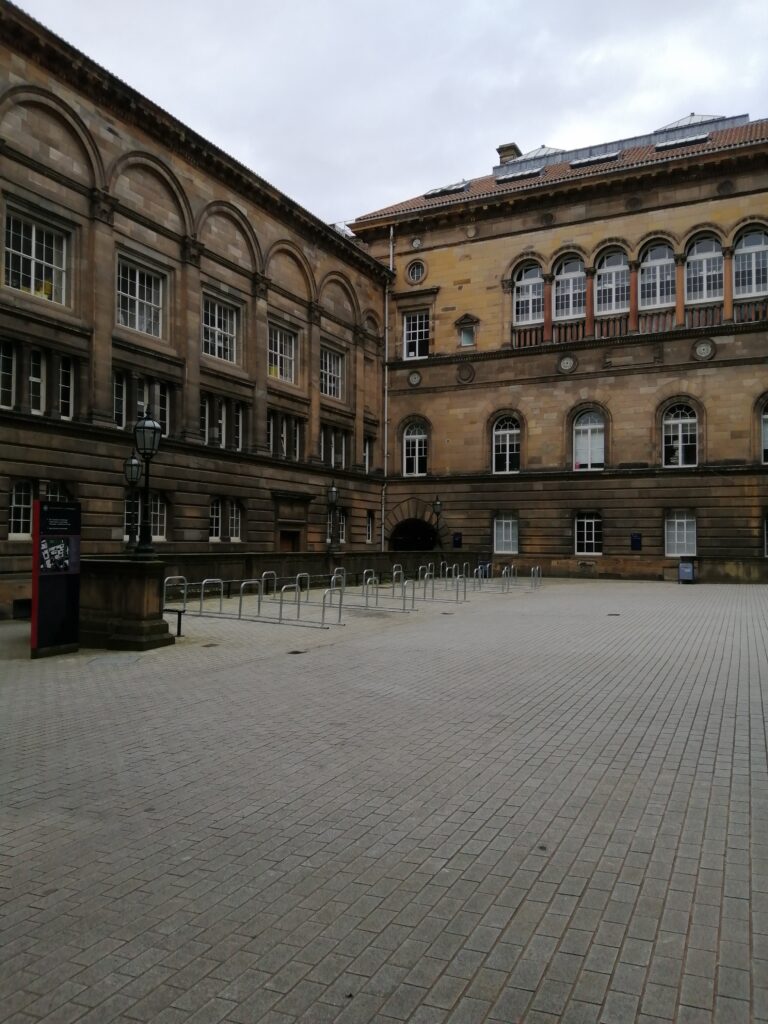
Stop 3 – Elsie Inglis Quadrangle, Teviot Place
In July 2019, seven women graduated from the University of Edinburgh. This may not sound remarkable to us; however, the graduation took place 150 years after the women had “matriculated” – begun their studies – at the university.
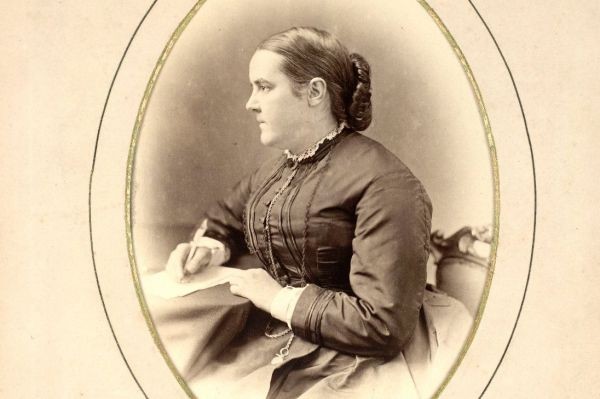
These women became known as “the Edinburgh Seven” – the very first women to be accepted as students at the university. Their leader and motivator was Sophia Jex-Blake (1840 – 1912) (image right). There is a plaque in her honour on the east wall of the entrance archway to the Medical School Building (image below)[1].
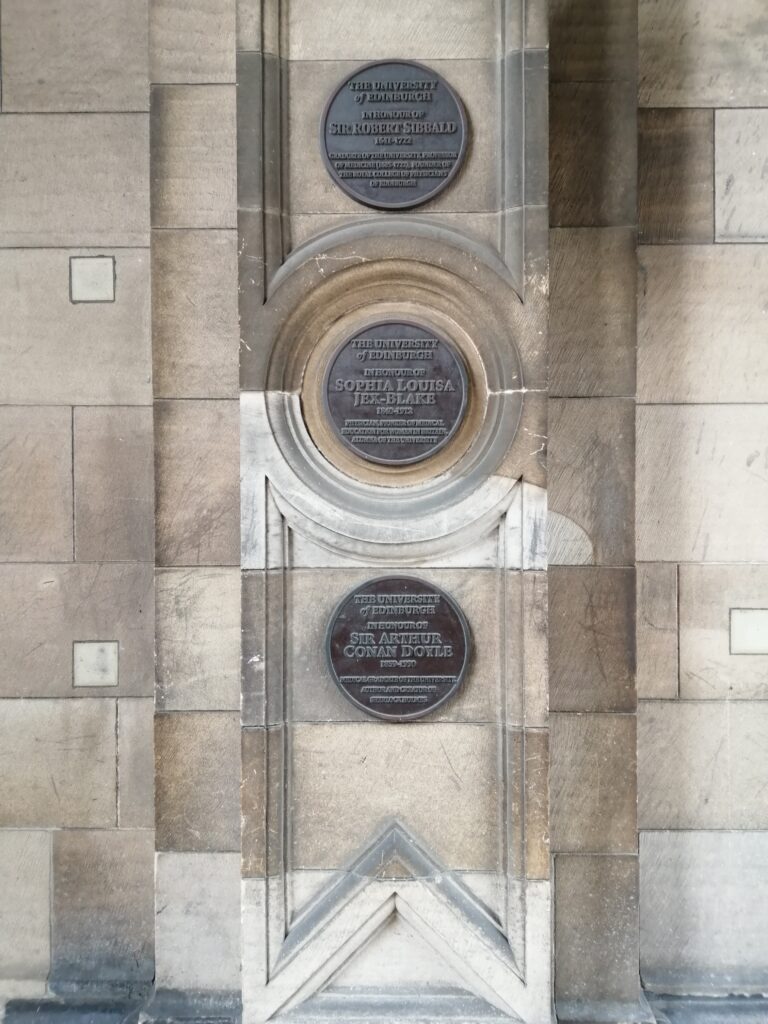
Sophia had already shown her credentials as an impressive student. While studying maths at Queen’s College in London she accepted a post as mathematics tutor at the College. However, her heart became set on training as a doctor. Harvard in America would not accept a woman for training, so she tried Edinburgh – which also refused at first because it was considered too difficult to make the “necessary arrangements” for just one woman to study.
So Sophia encouraged six other women to join her in her goal and in 1869 “The Edinburgh Seven” [2] began their studies. Their path was not made easy. They were charged higher fees than their male counterparts, and had to arrange their own lectures since university staff were permitted but not required to teach women. And when they made their way to The Surgeon’s Hall in November 1870 in order to sit an anatomy exam, they were met by a mob that pelted the women (image below) with mud and rubbish. The women were ushered into the building, but as they sat their exam a sheep was pushed into the room to disrupt them. The invigilating professor is said to have commented: “The sheep can stay; it is clearly more intelligent than those out there.”
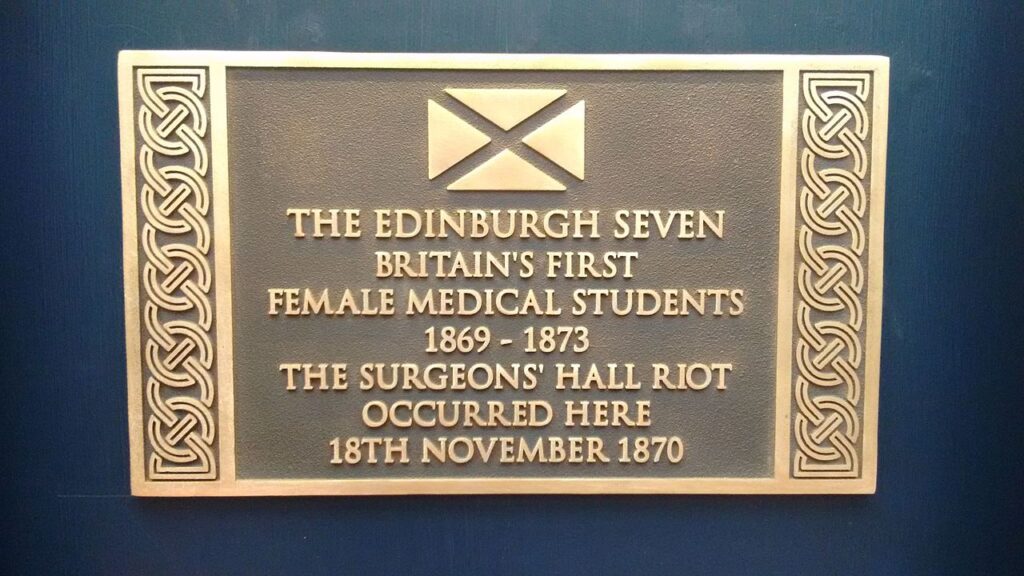
Nevertheless, the seven women were not allowed to sit all the exams they required, and eventually the university refused to let them graduate. A number of them travelled to Europe to complete their studies – Sophia herself qualified in Berne.
It wasn’t until 1889 that an Act of Parliament sanctioned degrees for women; and the first women to graduate from University of Edinburgh did so in 1894. (Officially. . . but, as we’ll learn at the end of our pilgrimage, there was at least one remarkable exception!)
Meanwhile, Sophia became instrumental in setting up the London School of Medicine for Women, and later returned to Edinburgh to found the Edinburgh Hospital and Dispensary for Women and Children. One of her students was Elsie Inglis (1864 – 1917) (image below).
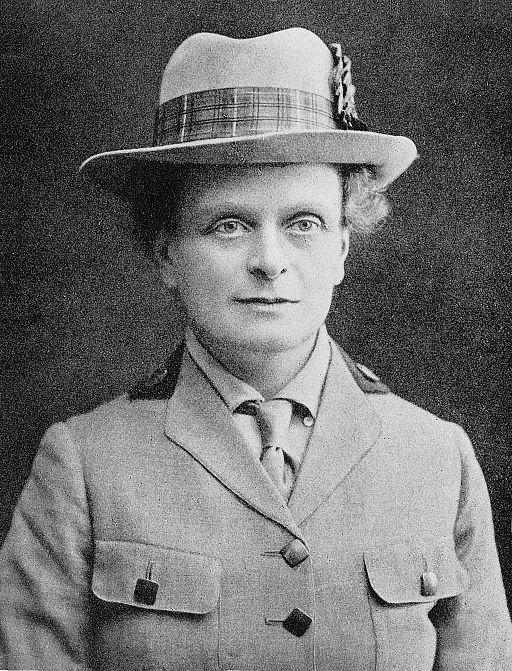
Elsie was an innovative Scottish doctor and suffragist. In 1904 she opened “The Hospice”, a hospital for women and children, on the Royal Mile[3]. Then, in 1914, Elsie volunteered her services as a surgeon to the War Office only to be told, “Go home, dear lady and sit still.” She didn’t!
Instead, she established the Scottish Women’s Hospitals for Foreign Service, which went out to France as well as to Serbia to help the soldiers there. The hospitals provided nurses, doctors, ambulance drivers, cooks and orderlies. By the end of the war, 14 medical units had been outfitted and sent to serve in Corsica, France, Malta, Romania, Russia, Salonika and Serbia. In 1916, Inglis become the first woman to receive the Order of the White Eagle, the highest honour Serbia could bestow.
REFLECTION
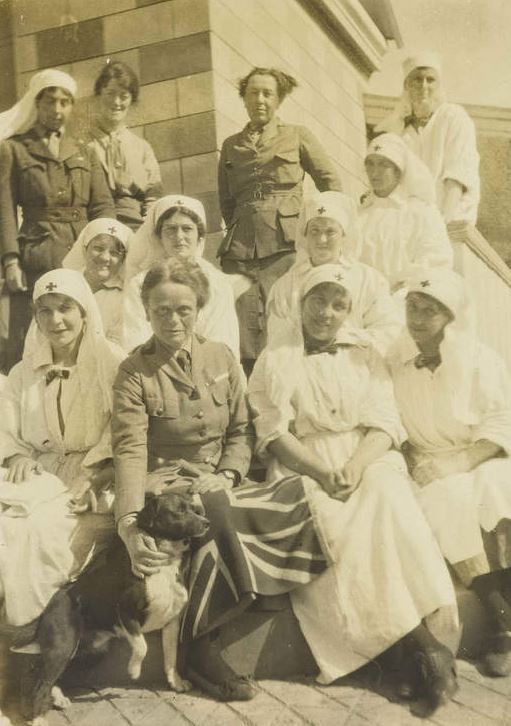
Elizabeth Blackwell, a colleague of Sophia Jex-Blake and another pioneer of women in medicine (both in the United States and in England), described Sophia as a “dangerous woman” because of her steely determination to break down closed doors. By breaking down closed doors, Sophia encouraged her peers and was a mentor to those who, like Elsie Inglis (image right), followed in her path.
In the Gospel of Luke, Jesus tells the story of a judge who is repeatedly approached by a poor widow seeking justice. He keeps knocking her back until, eventually, her persistence wins out. Nevertheless, the fact that the judge appears only to relent for the sake of a quiet life is unsettling. The task of seeking real and consistent justice is an ongoing one. So is the need to tell the stories of those who have spoken truth to power.
It’s all very well for us to speak of justice and Christian values in Sunday worship – but if we can’t take our voices beyond our church doors, what good are our good intentions?
Click here for further information.
[1]
A round plaque is inscribed: “THE UNIVERSITY of EDINBURGH IN HONOUR OF SOPHIA LOUISA JEX-BLAKE 1840-1912 PHYSICIAN, PIONEER OF MEDICAL EDUCATION FOR WOMEN IN BRITAIN, ALUMNA OF THE UNIVERSITY”.
[2]
The Edinburgh Seven: Sophia Jex-Blake, Isabel Thorne, Edith Pechey, Matilda Chaplin, Helen Evans, Mary Anderson Marshall and Emily Bovell
[3]
“In November 1899, at the same time as [Sophia Jex-Blake’s] Edinburgh Hospital and Dispensary for Women and Children moved to Bruntsfield Lodge, the Medical Women’s Club led by Elsie Inglis opened a seven-bed hospital, known as the George Square Nursing Home, at 11 George Square. In 1904 the Home moved to 219 High Street and was renamed the Hospice: its main aim was to provide assistance to the poorer women of Edinburgh during pregnancy and confinement. In 1910 this Hospice amalgamated with the Bruntsfield Hospital.” (Lothian Health Services Archive)


